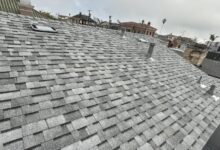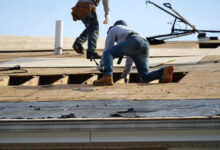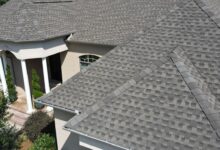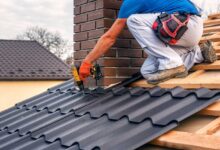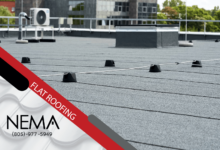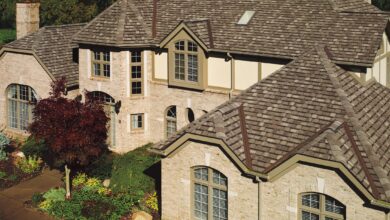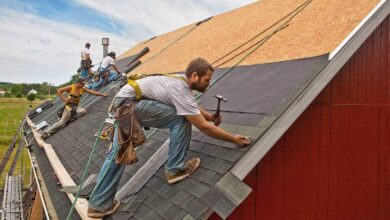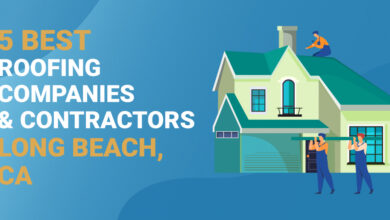Richmond Roof Repair: Expert Guide
Richmond Roof Repair: Navigating the complexities of roof maintenance in Richmond requires understanding the unique challenges posed by the local climate and building materials. From the common asphalt shingles prevalent across many neighborhoods to the occasional tile roofs found in older, more established areas, each roofing type presents its own set of repair needs. This guide explores the typical issues faced by Richmond homeowners, offering insights into cost-effective solutions and helping you find the right professional for the job. We’ll cover everything from identifying damage and choosing a reputable contractor to understanding insurance claims and preventative maintenance.
This comprehensive guide aims to equip Richmond residents with the knowledge and resources necessary to address any roofing concerns effectively and efficiently. We delve into the specifics of various repair methods, providing a clear understanding of the processes involved and the factors influencing overall costs. Whether you’re facing a minor leak or a more significant issue, this resource will serve as your trusted companion throughout the entire repair process.
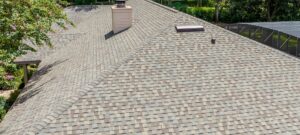
Understanding Richmond’s Roofing Landscape
Richmond, Virginia, experiences a diverse range of weather conditions, impacting the lifespan and maintenance requirements of residential roofs. Understanding the common roofing materials, prevalent problems, and associated costs is crucial for homeowners. This section will provide an overview of the Richmond roofing landscape, offering valuable insights for informed decision-making.
Typical Roofing Materials in Richmond Homes
Asphalt shingles remain the most prevalent roofing material in Richmond due to their affordability and relatively easy installation. However, other materials like architectural shingles (offering enhanced durability and aesthetic appeal), metal roofing (known for its longevity and resilience), and occasionally tile roofing (primarily in older or more upscale homes) are also found. The choice of material often depends on budget, architectural style, and desired lifespan.
Common Roofing Problems in Richmond Due to Weather Conditions
Richmond’s climate, characterized by hot, humid summers and occasionally harsh winters, contributes to several common roofing problems. Heavy rainfall can lead to leaks, particularly around flashing and chimneys. Strong winds can damage shingles, causing them to lift or become dislodged. Extreme temperature fluctuations can cause asphalt shingles to crack or become brittle over time. Furthermore, the presence of trees and the accumulation of leaves and debris can contribute to moisture retention and premature deterioration of roofing materials.
Lifespan of Different Roofing Materials in Richmond
The lifespan of a roof significantly depends on the material used, quality of installation, and regular maintenance. Asphalt shingles typically last 15-20 years, while architectural shingles can extend that lifespan to 25-30 years. Metal roofs are known for their exceptional durability, lasting 50 years or more with proper care. Tile roofs, when well-maintained, can last for several decades, even exceeding 50 years in some cases. These lifespans are estimates and can vary depending on specific conditions. For instance, a poorly installed asphalt shingle roof might only last 10 years, while a meticulously maintained metal roof could far exceed its average lifespan.
Average Costs for Various Roof Repair Services in Richmond
The following table provides estimated costs for common roof repair services in Richmond. These are averages and actual costs may vary based on the extent of damage, accessibility, material costs, and the contractor’s pricing.
| Repair Service | Average Cost Range |
|---|---|
| Minor Shingle Repair (1-5 shingles) | $100 – $500 |
| Flashing Repair | $200 – $800 |
| Gutter Cleaning and Repair | $100 – $300 |
| Leak Detection and Repair | $300 – $1000+ |
Types of Richmond Roof Repairs
Richmond’s diverse housing stock means a variety of roofing materials require repair. Understanding the specific needs of each material is crucial for effective and long-lasting solutions. This section details common repair procedures for prevalent roofing types in the Richmond area.
Asphalt Shingle Roof Repair
Asphalt shingle damage is common, often resulting from age, weather, or impact. Repairing these involves several steps. First, a thorough inspection identifies the extent of damage, including missing, cracked, or curled shingles. Damaged shingles are carefully removed, exposing the underlying felt paper. Any damaged felt is replaced, ensuring a watertight base. New shingles, matching the existing ones in color and style, are then installed, overlapping correctly to prevent water intrusion. Finally, the repaired area is inspected for proper sealing and alignment. This process ensures the roof’s integrity and extends its lifespan. For extensive damage, a full roof replacement might be more cost-effective.
Tile Roof Repair
Tile roofs, while durable, are susceptible to cracking, breakage, and displacement. Repairing a damaged tile involves carefully removing the broken or damaged tile. The underlying structure is inspected for any damage; this might include the underlayment or the roof decking. Any necessary repairs are made to these underlying layers. A replacement tile, ideally matching the existing ones, is then carefully fitted into place, ensuring proper alignment and securing it with mortar or appropriate adhesive. This process requires specialized knowledge and tools, often necessitating the expertise of a professional roofer. The intricate nature of tile roofs demands precision to maintain the roof’s aesthetic appeal and structural integrity.
Flat Roof Repair
Flat roofs, prevalent in many Richmond buildings, often require different repair strategies than sloped roofs. Common problems include punctures, leaks, and blistering of the roofing membrane. Repairs frequently involve patching damaged areas with compatible roofing material. This might involve using specialized sealants or applying new layers of membrane to reinforce the existing surface. Regular maintenance, including cleaning and inspection, is vital for preventing more extensive damage. For significant damage, a complete roof replacement might be the most suitable solution. Proper drainage systems are also crucial for the longevity of a flat roof; ensuring gutters and downspouts are clear and functioning correctly is essential.
Comparison of Repair Methods
The methods for repairing different roofing materials vary significantly due to material properties and construction techniques. Asphalt shingles are relatively easy to repair, involving individual shingle replacement. Tile roofs require more specialized skills and careful attention to detail. Flat roof repairs can range from simple patching to more extensive membrane replacements, depending on the severity of the damage. The cost of repair also varies widely; asphalt shingle repair is generally less expensive than tile or flat roof repairs, which can involve more labor-intensive processes and specialized materials. A professional assessment is crucial to determine the most appropriate and cost-effective repair method for a specific roofing problem.
Finding and Choosing a Richmond Roofer
Choosing the right roofing contractor is crucial for a successful and long-lasting roof repair in Richmond. A poorly chosen contractor can lead to shoddy workmanship, inflated costs, and prolonged project timelines. Taking the time to thoroughly vet potential roofers will protect your investment and ensure peace of mind.
Questions to Ask Potential Roofers
Before engaging a roofing contractor, it’s vital to gather comprehensive information. This ensures you understand their approach, capabilities, and commitment to quality. The following questions will guide this process.
- Confirm the contractor’s licensing and insurance status, verifying the information with the appropriate regulatory bodies.
- Inquire about their experience with similar roof repairs, specifically detailing the types of roofing materials they’ve worked with and their success rate.
- Request a detailed breakdown of the repair process, including timelines, materials used, and the disposal method for old roofing materials.
- Ask about their warranty policies, covering both workmanship and materials, and understand the terms and conditions.
- Request references from previous clients to assess their satisfaction with the contractor’s work and professionalism.
- Clarify their payment terms, including the method of payment and any potential deposit requirements.
- Seek clarification on their permit acquisition process, ensuring they’ll handle all necessary permits and inspections.
Evaluating Credentials and Experience
Thoroughly assessing a roofing contractor’s qualifications and experience is paramount. This involves more than just checking for a license; it’s about understanding their track record and expertise.
Verify their licensing and insurance information through official channels. Look for evidence of ongoing professional development and certifications relevant to roofing practices. Investigate their business history, checking for any complaints or legal issues filed against them. Review online reviews and testimonials from previous clients to gauge their reputation and customer satisfaction levels. A contractor with a long history of positive feedback and a clean record is a strong indicator of reliability.
Red Flags When Hiring a Roofer
Several warning signs can indicate a less-than-reputable roofing contractor. Recognizing these red flags is crucial in avoiding potential problems.
- High-pressure sales tactics or overly aggressive pricing strategies should raise immediate concerns.
- A contractor unwilling to provide references or proof of insurance and licensing should be avoided.
- Unclear or vague contracts lacking detailed specifications about the scope of work and payment terms are a major red flag.
- An inability to provide a detailed estimate or breakdown of costs should prompt further investigation.
- Contractors who request full payment upfront without a clear project timeline or milestone-based payments should be viewed with suspicion.
The Importance of Multiple Quotes
Obtaining multiple quotes from different roofing contractors is a critical step in the decision-making process. This allows for a comprehensive comparison of pricing, services offered, and overall value. Comparing quotes enables you to identify the most competitive and suitable option based on your budget and requirements. It also helps in negotiating a fair price and ensures you’re not overpaying for the services. For example, obtaining three quotes might reveal a significant difference in price for the same scope of work, highlighting the importance of comparative analysis before committing to a specific contractor.
Roof Repair Costs and Budgeting
Understanding the cost of roof repairs in Richmond is crucial for homeowners. A clear budget prevents unexpected expenses and ensures a smooth repair process. This section breaks down typical costs, influencing factors, and financing options.
The cost of roof repairs in Richmond varies significantly depending on several factors. A small shingle repair might cost a few hundred dollars, while extensive damage requiring a full roof replacement could reach tens of thousands. Understanding these variables is key to accurate budgeting.
Typical Costs of Common Roof Repairs
The following table provides a general overview of costs for common roof repairs in Richmond, Virginia. These are estimates and actual costs may vary based on factors discussed below. It’s crucial to obtain multiple quotes from reputable roofing contractors for an accurate assessment of your specific situation.
| Repair Type | Average Cost Range | Factors Affecting Cost | Notes |
|---|---|---|---|
| Shingle Repair (small area) | $200 – $800 | Number of shingles, accessibility, material cost | May involve simple patching or replacement of a few shingles. |
| Flashing Repair | $300 – $1500 | Extent of damage, material type, labor complexity | Flashing around chimneys and vents is critical for preventing leaks. |
| Gutter Repair/Replacement | $100 – $2000+ | Length of gutters, material type (aluminum, copper, etc.), labor | Prices increase significantly with length and material selection. |
| Valley Repair | $500 – $3000+ | Complexity of repair, material cost, accessibility | Valley repairs often require specialized skills and techniques. |
Factors Influencing Roof Repair Costs
Several factors significantly influence the overall cost of a roof repair project. These factors should be considered when budgeting for repairs.
Material Costs: The type of roofing material used directly impacts the cost. For example, premium asphalt shingles are more expensive than standard ones. Similarly, copper flashing is significantly pricier than aluminum. The cost of materials can fluctuate based on market conditions and availability.
Labor Costs: Labor costs depend on the complexity of the repair, the number of workers required, and the contractor’s hourly rate. A simple shingle repair will require less labor than a complex flashing repair or a significant area of damage.
Accessibility: Difficult-to-reach areas, such as steep roofs or those requiring specialized equipment, increase labor costs. The need for scaffolding or other safety measures adds to the overall expense.
Extent of Damage: The size and severity of the damage directly correlate with the cost of repair. Minor repairs are naturally less expensive than extensive damage requiring significant material and labor.
Permitting and Inspections: Depending on the extent of the repair, permits may be required, adding to the overall cost. Inspections also add to the timeline and potentially the cost.
Financing Options for Roof Repairs
Several financing options are available for homeowners needing to fund roof repairs. These options can make larger repair projects more manageable.
Home Equity Loans/Lines of Credit (HELOCs): These loans use your home’s equity as collateral. They offer lower interest rates than personal loans but require good credit and sufficient equity.
Personal Loans: Personal loans can be used to finance roof repairs, but interest rates tend to be higher than home equity loans. Eligibility depends on credit score and income.
Credit Cards: Credit cards can provide short-term financing, but high-interest rates should be carefully considered. This option is generally only suitable for smaller repair projects.
Contractor Financing: Some roofing contractors offer financing plans directly to customers. These plans may offer flexible payment terms, but it’s crucial to review the terms and interest rates carefully.
Maintaining a Healthy Roof
Proactive roof maintenance is crucial for extending its lifespan and preventing costly repairs. By implementing a preventative maintenance plan and regularly inspecting your roof, you can significantly reduce the risk of major damage and ensure the long-term health of your home’s most important protective layer. This involves understanding both preventative measures and recognizing signs of potential problems.
Preventative roof maintenance involves several key strategies. Regular cleaning removes debris that can trap moisture and damage roofing materials. Addressing minor issues promptly prevents them from escalating into larger, more expensive problems. Finally, understanding your roof’s specific needs, based on its materials and age, allows for tailored maintenance.
Preventative Maintenance Tips
Regular cleaning is essential. Accumulated leaves, branches, and other debris can clog gutters, leading to water damage. Moss and algae growth can also weaken roofing materials. Annual cleaning, ideally in the spring and fall, is recommended. This involves clearing gutters and downspouts, removing debris from the roof surface, and using a soft brush to remove any moss or algae growth. For steeper roofs, professional cleaning may be advisable.
Promptly addressing minor issues is critical. A small leak, a loose shingle, or a damaged flashing should be repaired immediately to prevent further damage. Ignoring these small problems can lead to significant water damage, structural issues, and costly repairs down the line. Regular inspections help identify these issues early on.
Tailoring maintenance to your roof type is important. Asphalt shingles require different maintenance than tile or metal roofs. Understanding the specific needs of your roof material will help you develop an effective maintenance plan. For instance, asphalt shingles might require more frequent cleaning than metal roofs, which are generally more durable.
Signs of Roof Damage Requiring Immediate Attention
Several signs indicate the need for immediate roof repair. These include visible leaks, significant shingle damage, missing or damaged flashing, sagging rooflines, and the presence of mold or mildew. These issues often require professional attention and should not be ignored.
Visible leaks are a clear sign of roof damage. Water stains on ceilings or walls, dripping water, or damp spots are all indicators of a leak that needs immediate attention. Ignoring a leak can lead to extensive water damage, mold growth, and structural problems.
Significant shingle damage, such as large areas of missing or damaged shingles, requires prompt repair. Damaged shingles leave your roof vulnerable to water penetration and further damage. Consider a professional inspection and repair if a large portion of your shingles are damaged or missing.
Missing or damaged flashing is a serious issue. Flashing is a crucial component that seals the joints and seams of your roof, preventing water penetration. Damaged flashing can lead to leaks and significant water damage.
Sagging rooflines indicate structural problems. If you notice any sagging or unevenness in your roofline, it’s a sign of potential structural damage that requires immediate attention from a qualified professional.
Mold or mildew growth on your roof indicates moisture problems. This can be a sign of a leak or other moisture-related issue that needs to be addressed promptly to prevent further damage and potential health hazards.
The Importance of Regular Roof Inspections
Regular roof inspections are vital for identifying potential problems before they become major issues. These inspections can help extend the lifespan of your roof and prevent costly repairs. Frequency depends on factors such as climate, roof age, and materials, but at least an annual inspection is recommended. For older roofs or those in harsh climates, more frequent inspections may be necessary.
Annual inspections can identify small problems before they escalate. A small leak detected early can be easily repaired, whereas a large leak caused by years of neglect can lead to extensive and costly repairs. This proactive approach saves money in the long run.
Safely Inspecting Your Own Roof
While professional inspections are recommended, you can perform a basic visual inspection of your roof from the ground. Use binoculars to check for missing or damaged shingles, loose flashing, and signs of water damage. Never attempt to climb onto your roof unless you are experienced and have the proper safety equipment. Climbing onto a roof without the necessary training and safety measures is extremely dangerous. If you discover any issues, contact a qualified roofing professional for a thorough inspection and repair.
Insurance and Roof Repairs
Dealing with roof damage can be stressful, but understanding your insurance coverage can significantly ease the burden. This section outlines the process of filing a claim and clarifies what’s typically covered and excluded.
Filing an insurance claim for roof damage usually begins by contacting your insurance provider immediately after discovering the damage. Report the incident, providing details of the damage and circumstances. Your insurer will likely send an adjuster to assess the damage and determine the extent of the coverage.
Information Required for Insurance Claims
Insurance companies require specific information to process roof repair claims efficiently. This ensures a thorough assessment of the damage and prevents fraudulent claims. Providing accurate and complete information expedites the process.
Typically, insurers will require documentation such as photographs of the damage, the date of the incident (if known), details of any weather events that may have caused the damage, your policy information, and possibly a contractor’s estimate for the repairs. They may also request information about the age and type of your roofing materials, and any previous repairs or maintenance performed on your roof. A detailed description of the damage, including the affected area and the extent of the problem, is crucial.
Commonly Covered Causes of Roof Damage
Most homeowner’s insurance policies cover damage caused by unforeseen and sudden events. These events often fall under specific categories outlined in your policy.
Commonly covered causes include damage from hailstorms, strong winds, falling trees, and lightning strikes. Damage caused by fire or other covered perils is also typically covered. It’s important to review your specific policy for a comprehensive list of covered perils. For instance, a policy might specify coverage for wind damage exceeding a certain speed, or hail damage exceeding a certain size. Understanding these specifics is key to a smooth claims process.
Situations Where Insurance May Not Cover Roof Repair Costs
While many roof repairs are covered by insurance, certain circumstances may result in denied claims. Understanding these exceptions is crucial to managing expectations.
Insurance typically does not cover damage caused by normal wear and tear, gradual deterioration, or lack of maintenance. For example, if shingles are damaged due to age and exposure to the elements over many years, this would generally not be covered. Similarly, damage caused by pest infestations or improper installation (unless due to a faulty product covered under warranty) is usually the homeowner’s responsibility. Additionally, damage resulting from neglect, such as failing to address a minor leak that subsequently caused significant damage, might not be fully covered. Pre-existing conditions, unless directly related to a covered event, are another common exclusion. For instance, if a roof already had underlying damage, and a storm further exacerbates it, only the damage directly attributable to the storm may be covered. Always consult your policy and discuss specific circumstances with your insurance provider for clarification.
Visual Guide to Roof Damage
Identifying roof damage early can save you significant time and money on repairs. A proactive approach is key to preventing minor issues from escalating into costly replacements. This visual guide will help you recognize common signs of roof damage and understand their potential causes.
Curled or Missing Asphalt Shingles
Imagine a close-up of asphalt shingles, some noticeably curled upwards at the edges, others completely missing. The curled shingles show signs of sun damage, exhibiting a faded, brittle appearance, with visible cracking along their edges. Moisture penetration is evident from dark staining underneath the curled areas. Missing shingles leave the roof decking exposed to the elements. This type of damage is typically caused by prolonged sun exposure, leading to shingle degradation and weakening. Wind damage can also contribute to shingle loss, especially during storms. Regular roof inspections are crucial for early detection and preventative maintenance to prevent further damage and leaks.
Granule Loss on Asphalt Shingles
Picture asphalt shingles with a noticeably diminished amount of protective granules, revealing the underlying asphalt. The exposed asphalt appears dark and shiny, contrasting with the surrounding granulated areas. In some areas, the asphalt may even be cracked or showing signs of weathering. This granule loss is primarily caused by age, weathering, and the natural degradation of the shingles. High winds can also accelerate granule loss. The exposed asphalt becomes vulnerable to UV radiation, further accelerating deterioration and leading to premature shingle failure. Addressing granule loss early can extend the lifespan of your roof.
Moss and Algae Growth
Visualize a roof surface heavily covered in dark green moss and algae, particularly in shaded or damp areas. The growth is thick and appears slimy in places, clinging to the shingles. This organic growth not only detracts from the roof’s appearance but also retains moisture, creating a breeding ground for further damage. The weight of the moss and algae can stress the shingles and underlying structure, while the retained moisture can lead to wood rot and shingle degradation. This type of damage is often seen in humid climates or areas with abundant shade. Regular cleaning and the application of appropriate treatments can prevent significant moss and algae buildup.
Last Point
Successfully completing a Richmond roof repair project hinges on a combination of informed decision-making and proactive maintenance. By understanding the common challenges, choosing a qualified contractor, and implementing preventative measures, homeowners can significantly extend the lifespan of their roofs and protect their investment. Remember, a well-maintained roof is a key component of a safe and comfortable home. This guide has provided the tools; now it’s time to take control of your roof’s health and ensure its longevity.

